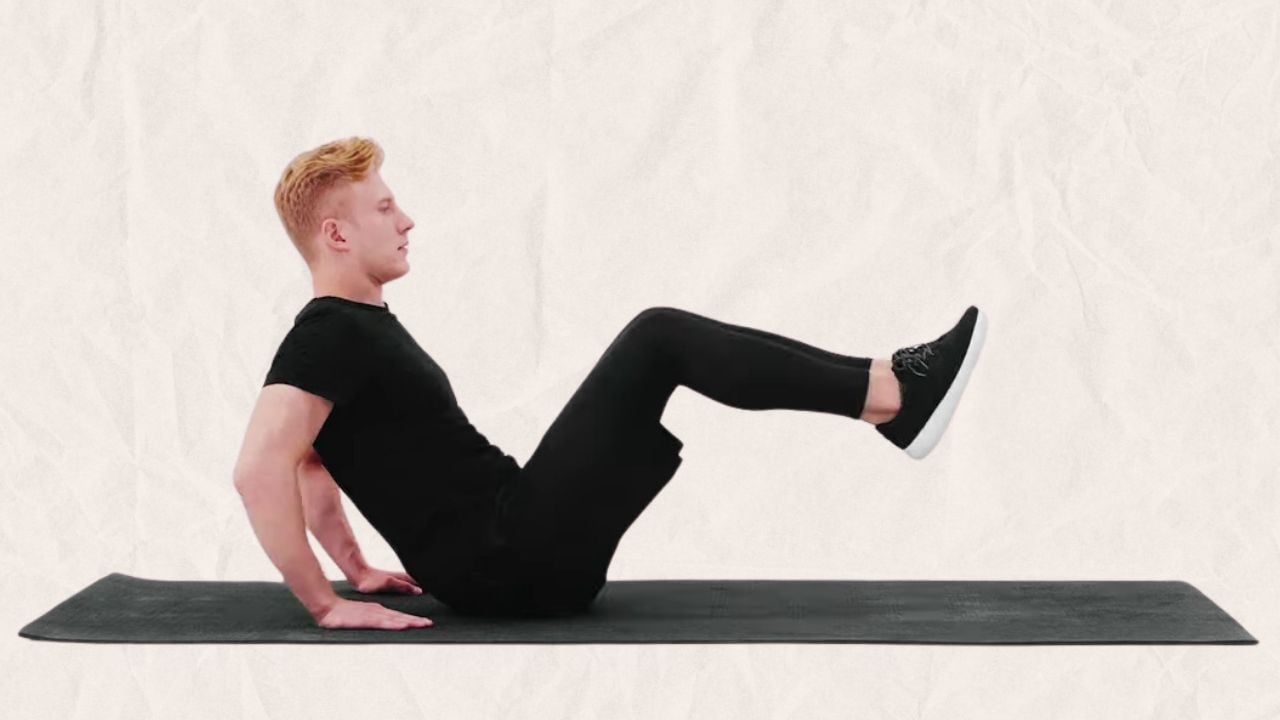In and Outs Abs Workout is a simple yet effective routine that targets all the key muscles in your core, including your rectus abdominis (your six-pack muscles), transverse abdominis, and obliques.
It is beginner-friendly but easily adjustable if you want to increase the intensity.
It operates by alternating “in” exercises, such as crunch variations that target the abs and obliques, with “out” exercises that test your transverse abdominals and enhance spinal stability.
I love doing this because, along with training abs, it also improves coordination and balance.

In and Out Muscles Worked
- Primary muscles worked: Rectus abdominis (six-pack muscles) and Transverse abdominis (deep core stabilizers)
- Secondary muscles worked: Obliques (internal and external) and Hip flexors
- Stabilizing muscles: Lower back (erector spinae), Glutes and Quadriceps

How to Do In and Out Exercise
- First, find a flat, free-of-obstacles place. To make the exercise comfortable, use a mat or soft surface.
- Sit down on the mat, legs extended in front of you.
- Place your hands slightly behind you, fingers pointing towards your feet.
- Your arms should be straight, and palms should be flat on the ground for support.
- Lean back slightly so your torso is at an angle, and lift your feet a few inches off the ground. This forms a kind of ‘V’ shape with your body.
- Engage your core muscles. This is crucial for stability and to get the full benefit of the exercise.
- Pull your knees toward your chest while simultaneously leaning slightly forward, closing the V-shape.
- As you “close” the V, your feet will come closer to your body but remain off the ground.
- Slowly extend your legs out straight in front of you while leaning back to the starting angled position, opening the V-shape again.
- Ensure your feet don’t touch the ground to maintain core engagement and intensity.
- Continue the motion smoothly, pulling the knees in and then extending them out for the desired number of repetitions.
Know More: 18 Abs Exercises At Home Without Equipment
Tips and Form
- Make sure that your movements are controlled and precise. Running through the rounds can compromise your form and strain your lower back.
- Avoid rounding your shoulders or back, as this could lead to discomfort or injury.
- This exercise is all about the core. Make sure you’re not just going through the motions with your legs. Every time you do a set of exercises, tighten and engage your abdominal muscles.
- Exhale as you bring your knees toward your chest, and inhale as you extend your legs out. Proper breathing can enhance muscle function and endurance.
- Please keep your hands on the ground to stay balanced and avoid pushing off with them. Let your core do the work. If you’re a pro, try to make the move with your hand in the air.
- Listen to your body. If the standard In and Outs movement is too difficult at first, try a slight modification, such as reducing the range of motion or placing your hands further behind you for added support.
- To get a comprehensive abdominal workout, include other core-focused movements like planks, Russian twists, or leg raises in your routine.
Use our free calculator to know your weight loss calories requirement.

Manish is a NASM-certified fitness and nutrition coach with over 10 years of experience in weight lifting and fat loss fitness coaching. He specializes in gym-based training and has a lot of knowledge about exercise, lifting technique, biomechanics, and more.
Through “Fit Life Regime,” he generously shares the insights he’s gained over a decade in the field. His goal is to equip others with the knowledge to start their own fitness journey.
